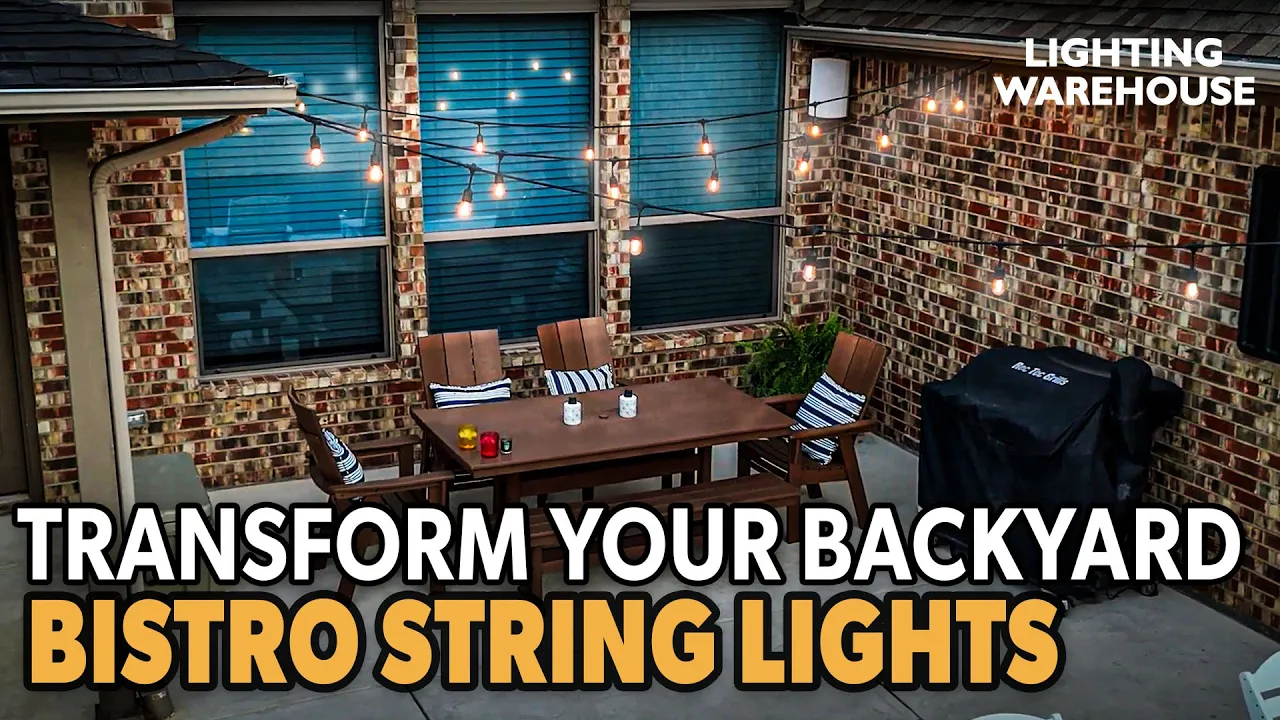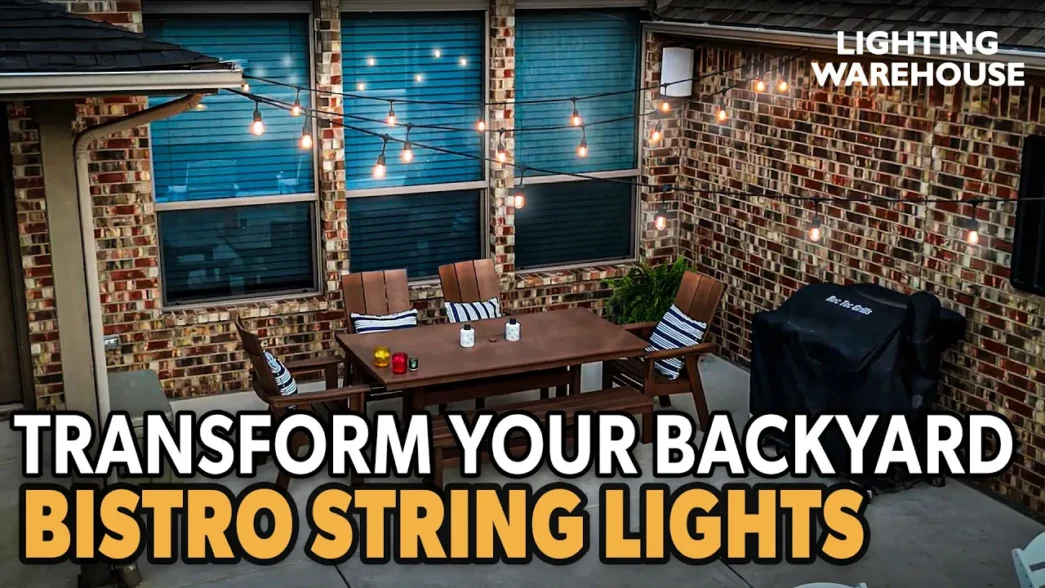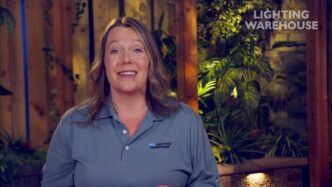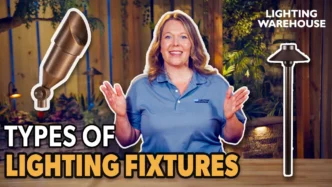String light installation is easier with this quick guide from Lighting Warehouse’s Matt Eaton, who walks you through the installation of our Prime Patio Bistro String Lights in a sleek zigzag pattern. Whether you’re lighting up a backyard, patio, or event space, proper outdoor string light installation brings instant ambiance and sophistication.
This install uses the line voltage (120V) version of the Bistro String Lights, but they’re also available in a low voltage (12V) option for transformer-powered systems. The cords are commercial-grade and come in 48 ft and 96 ft lengths, sold separately from the S14 bulbs—so you can customize the setup to fit your exact space.
Not sure how to hang them? No worries! We break down the hardware, spacing, socket counts, and even touch on when to use our handy installation kit for longer runs. It’s all part of making your lighting project simple, stunning, and successful. Visit the Bistro String Lights category page on LightingWarehouse.com for layouts, installation tips, and more outdoor lighting solutions.
At first glance, string light installations might seem intimidating, but the kits from Lighting Warehouse aim to make the process easy and accessible to all. We’ll provide some basic tips on safe and proper outdoor string light installation so that you can create an outdoor space that is cozy, inviting, and versatile for all events.
Tips on How to Install Outdoor String Lights
Depending on your power source, you can opt for a 120-volt or low-voltage set of string lights. The string light installation process is similar regardless of the required power, but it’s also important to ensure that the bulbs within the string lights are compatible as well. For instance, low-voltage string lights should only use low-voltage outdoor bulbs. Mixing bulbs and voltage requirements can result in underperforming or outright malfunctioning bulbs that can affect the condition of your string lights in the long run.
The overall length of your string lights will also need to be considered during installation. Anything longer than 40 feet will create a sag on the line, which can be a hazard in high-traffic areas. For larger areas, we recommend utilizing one of our landscape lighting kits, which include additional support to eliminate sagging and ensure equal illumination across the entire line.
The surface on which your lights sit is also important in the string light installation process. On structural surfaces, like fences or decks, you can install hooks or eye bolts for a secure attachment for your string lights. For longer, suspended situations, you should also invest in support poles, which help keep the string lights aloft without obstructing passersby or creating a hazard during your event.
String Light Installation Made Easier with Lighting Warehouse
With proper string light installation, your outdoor spaces can be the go-to spot in your neighborhood, and it’s all thanks to Lighting Warehouse. With notable outdoor brands like Prime Patio, you can easily transform any space with professional-grade lighting available at affordable prices. Combine your string lights with color-changing bulbs or smart controls to add even more versatility and appeal to your space to become the outright envy of your neighborhood.
FAQs on String Light Installation
By default, some string lights might not have waterproof-rated equipment, but you can easily make it durable during inclement weather with waterproof connectors, which ensure that water doesn’t damage the most crucial parts of any string light. Before making your next string light purchase, make sure that it has an IP rating of 65 for full waterproof protection.
With waterproof connectors and LED bulbs, your string lights can last for a few years. LED bulbs are a great option because they can last anywhere between 25,000 and 50,000 hours, thanks to their focus on energy efficiency and low heat output.
You can easily keep string lights up all year round. However, you will need to conduct regular maintenance so that they still function regardless of the outdoor elements. Make sure that dirt, debris, or water isn’t entering the bulbs or connectors, which can negatively impact string light performance. Make sure that the string lights as a whole do not have leaves or snow atop them to prevent additional weight from potentially damaging the entire setup.








